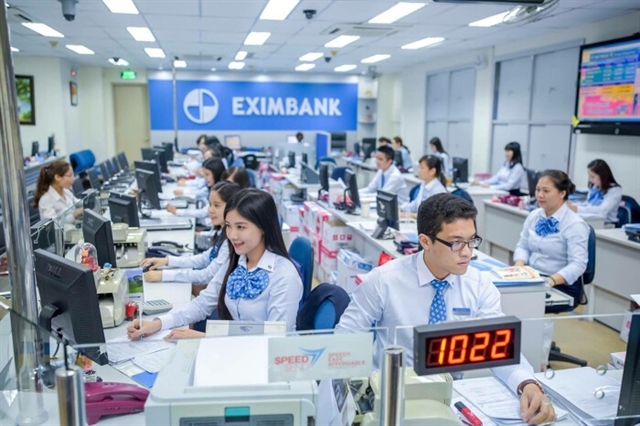 Media-OutReach Newswire
Media-OutReach Newswire

SINGAPORE - Media OutReach - 4 June 2019 - AsiaPacific waters remain the top shipping loss region, accounting for 45% oflosses globally in 2018, according to Allianz Global Corporate & SpecialtySE's (AGCS) Safety & Shipping Review 2019. Theannual study analyzes reported shipping losses over 100 gross tons (GT).
In 2018, 21total losses of vessels were reported in Asia Pacific, down from 46 losses inthe 12 months earlier, driven by a significant decline in activity in the globalloss hotspot, South East Asia, and weather-related losses after quieterhurricane and typhoon seasons.
While this plummet in total lossesis encouraging, thenumber of reported shipping incidents overall in Asia actually increased by 22%in the past four years, according to analysis of data from 4,000 insuredvessels by AGCS[1].However, this is more due to the sheer volume of ships that pass through theregion, rather than below-par safety standards.
"We do typically see more incidentsof groundings and collisions in Asia than other locations around the world, butthis generally reflects the higher levels of trade and where ship owners aretrading," says Tom Taberner, Regional Headof Energy & Marine Asia Pacific at AGCS. "In many cases portinfrastructure in Asia is new and there are many new or expanding ports inChina, Korea, Japan and Malaysia etc. Newer infrastructure means fewer issues,better port operations and more up-to-date charts, which will addresschallenges."
Worst accident locations and common causes of loss
Asia Pacific waters remain ahotspot for marine claims with 4 of the top 10 loss regions globally in 2018and half of the top 10 largest losses also occurring in the region. The SouthChina, Indochina, Indonesia and Philippines maritime region remains the toploss region, where one in four losses globally occurred in 2018 (12). This ishowever significantly down from 29 a year earlier, marking the first time theregion has seen a fall in losses in four years. Other top loss regions in AsiaPacific include Japan, Korea and North China (#4 globally), as well as theArabian Gulf and approaches (#5).
Cargoships (8) accounted for more than a third of vessels lost around AsiaPacific in the past year. Foundered (sunk/submerged) was the major cause,accounting for 14 of the 21 losses regionally -- over thrice as many as the nexthighest cause -- wrecked/stranded. Global results also bear this trend, where foundering(sinking), has accounted for over half (551) of the 1,036 lost globally overthe past decade, and are the most expensive cause of loss for insurers, accountingfor US $1.56bn in five years[2].
Despite a decline in number of total losses, thefrequency and cost of collision, grounding and fire incidents has increased insome locations for Asian based-ship owners and managers. There were 425collisions or contact incidents during the past 12 months, with the averagecost of collision claims highest on containers vessels ($840,000). Overall,collision incidents are the second most frequent cause of claims in the regionbehind machinery breakdown / engine damage (462 incidents).
Fires also continue to be an issue with 34 reportedincidents over four years, at a total cost to the region's insurance sector ofalmost $50m ($48mn). In particular, there has been an increase in cargo fireson container ships and car carriers, with a number of notable losses in 2018and 2019. "We have seen a rise in incidents involving car carriers, which arebecoming more expensive. This is a major concern with fires on the AutoBanner in May 2018 and most recently the Sincerity Ace inJanuary 2019," says Taberner.
Piracy numbers in the region havealso fallen, led by Indonesia which saw a 64% fall of piracy incidents (36) in2018 over the past five years, and is no longer the top piracy hotspot in theworld. However, the South East Asia and Africa regions still account for overthree quarters of all piracy incidents worldwide (77% - South East Asia 67incidents and Africa 87 incidents). Hijacking and boarding of vessels is stilltied to inequality and the economic situation in parts of Africa and Asia,meaning global economic and geopolitical continue to play on the security ofshipping.
Global trends and evolving compliance and security challenges
Globally, the loss trends aresimilar to Asia, with 46 large ships lost worldwide in 2018, down from 98 12months earlier. However, the number of reported shipping incidents overall(2,698 in 2018) shows little decline, less than 1% year-on-year. Just likeAsia, machinery damage is a major cause, accounting for more than a third ofthe 26,000+ incidents over the past decade, and is one of the most expensivecauses of marine insurance claims ($1bn+ in five years2).
Looking forward, regulationlimiting sulphur oxide emissions from January 2020 is likely to be a game-changer for the shipping industry, with wide-ranging implications for cost,compliance and crew. In addition, politicalrisk has also heightened globally and increasingly poses a threat toshipping security, trade and supply chains through conflicts, territorialdisputes, cyber-attacks, sanctions, piracy and even sabotage, as evidenced byrecent attacks on oil tankers in the Middle East. Growing numbers of migrantsat sea and an increase in stowaways on commercial vessels also has seriousconsequences for ship owners, leading to delays, diversions and pressure oncrew. In contrast to Asia, piracy incidents increased in 2018 to more than 200 --Nigeria is now the top global hotspot.
Other risk topics in the AGCS SafetyAnd Shipping Review include:
AGCS provides global marine andshipping insurance for all types of marine risk, from single vessels andshipments to the most complex fleets and multinational logistics businesses. TheMarineLine of Business contributed 11% to AGCS overall premium volume of EUR 8.2bn in 2018.
[1]Based on claims data from all vesselsunderwritten from AGCS Asia offices between 2015 and 2018. Claims have a totalvalue of approximately $500mn, net of deductible (this represents the totalcost to the insurance industry, not just AGCS, as more than one insurer can beinvolved on a particular risk)
[2] Based on analysis of 230,961 marine insurance industryclaims featuring AGCS and other insurers between July 2013 and July 2018.
Allianz Global Corporate & Specialty (AGCS) is a leading globalcorporate insurance carrier and a key business unit of Allianz Group. Weprovide risk consultancy, Property-Casualty insurance solutions and alternativerisk transfer for a wide spectrum of commercial, corporate and specialty risksacross 12 dedicated lines of business.
Our customers are as diverseas business can be, ranging from Fortune Global 500 companies to smallbusinesses, and private individuals. Among them are not only the world's largestconsumer brands, tech companies and the global aviation and shipping industry,but also wineries, satellite operators or Hollywood film productions. They alllook to AGCS for smart answers to their largest and most complex risks in adynamic, multinational business environment and trust us to deliver anoutstanding claims experience.
Worldwide, AGCS operates withits own teams in 34 countries and through the Allianz Group network andpartners in over 200 countries and territories, employing over 4,400 people. Asone of the largest Property-Casualty units of Allianz Group, we are backed bystrong and stable financial ratings. In 2018, AGCS generated a total of €8.2billion gross premium globally.
For more information please visit https://www.agcs.allianz.com/or follow us on Twitter @AGCS_Insurance and LinkedIn.
Cautionary Note Regarding Forward-Looking Statements
Thestatements contained herein may include statements of future expectations andother forward-looking statements that are based on management's current viewsand assumptions and involve known and unknown risks and uncertainties thatcould cause actual results, performance or events to differ materially fromthose expressed or implied in such statements. In addition to statements whichare forward-looking by reason of context, the words "may","will", "should", "expects", "plans","intends", "anticipates", "believes","estimates", "predicts", "potential", or"continue" and similar expressions identify forward-lookingstatements.
Actualresults, performance or events may differ materially from those in suchstatements due to, without limitation, (i) general economic conditions,including in particular economic conditions in the Allianz Group's corebusiness and core markets, (ii) performance of financial markets, includingemerging markets, and including market volatility, liquidity and credit events(iii) the frequency and severity of insured loss events, including from naturalcatastrophes and including the development of loss expenses, (iv) mortality andmorbidity levels and trends, (v) persistency levels, (vi) the extent of creditdefaults, (vii) interest rate levels, (viii) currency exchange rates includingthe Euro/U.S. Dollar exchange rate, (ix) changing levels of competition, (x)changes in laws and regulations, including monetary convergence and theEuropean Monetary Union, (xi) changes in the policies of central banks and/orforeign governments, (xii) the impact of acquisitions, including relatedintegration issues, (xiii) reorganization measures, and (xiv) generalcompetitive factors, in each case on a local, regional, national and/or globalbasis. Many of these factors may be more likely to occur, or more pronounced, asa result of terrorist activities and their consequences.
The mattersdiscussed herein may also be affected by risks and uncertainties described fromtime to time in Allianz SE's filings with the U.S. Securities and ExchangeCommission. The company assumes no obligation to update any forward-lookingstatement.



 Ảnh JP Morgan.png)
